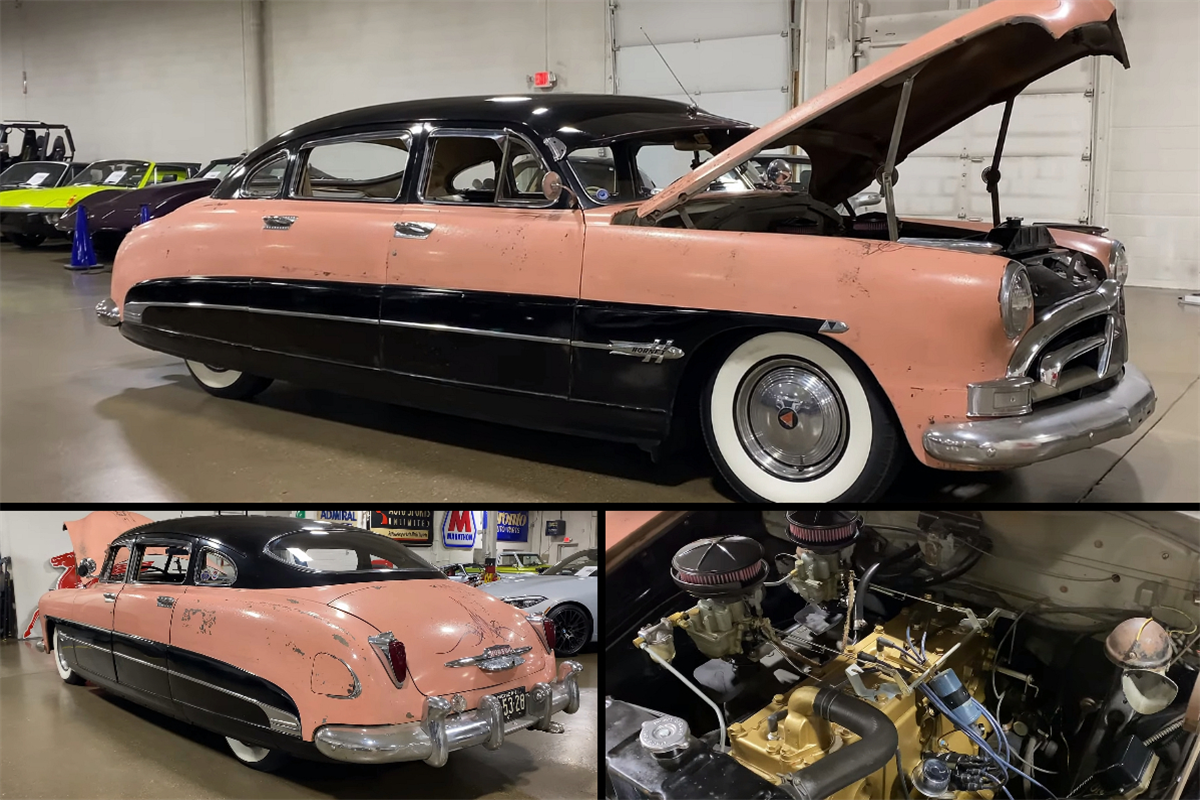The Hudson Motor Car Company, founded in 1909, went out of business three years later, in 1957, when it combined with Nash-Kelvinator to become the American Motors Corporation (AMC). While the Hudson brand is largely forgotten outside of the Hudson fan club, it has left a significant legacy. Hudson introduced numerous advances to the vehicle industry. It pioneered dual brakes, dashboard oil pressure and generator warning lights, and the first balanced crankshaft. More importantly, it created the Hornet, one of the best vehicles of the 1950s and one of the first genuine “Kings of NASCAR.”
Introduced for the 1951 model year, the Hornet was based on the company’s “step-down” chassis, which debuted in the 1948 Commodore. The design did not fully merge the body and the chassis into a single structure but had floor pans recessed between the rails.
The “step-down” layout gave the Hornet a lower center of gravity, improving handling and ride. The sleek body with nearly enclosed rear wheels made the Hornet exceptionally aerodynamic, too. These feats enabled the otherwise luxurious Hornet to become a successful NASCAR racer at a time when the series was contested by actual stock cars.

The Hornet hit the NASCAR ovals in 1951 and rendered the Oldsmobile 88, which had dominated the first two seasons, obsolete. With drivers like Herb Thomas, Marshall Teague, and Tim Flock behind the steering wheel, the Hornet won two championships and a whopping 66 races through 1954. It also made Hudson the first automobile manufacturer involved in stock car racing.
Oh, and did I mention the Hornet accomplished all of this with a straight-six engine? Whereas Oldsmobile and Ford employed V8 engines, the Hornet featured a 308-cubic-inch (5.0-liter) inline-six. At 145 horsepower, it was also on par with most V8 engines on the market at the time. As a result, the Hornet quickly became one of the most popular vehicles of its day. Between 1951 and 1954, when the Hornet was redesigned, Hudson sold over 131,000 vehicles. The second-generation vehicle, on the other hand, dropped the “step-down” platform in favor of the Nash full-size chassis. When AMC dropped the Hudson brand in 1957, the nameplate vanished.
Come 2023, the first-generation Hornet is becoming an increasingly scarcer classic. Because it’s not as desirable as the GM and Ford vehicles of the era, the Hornet is a car you’re more likely to see in a junkyard than at a classic car show. But some examples are still alive and kicking. This two-tone 1951 version is one of them.
A weathered four-door version finished in an unlikely color combo, this Hornet looks out of place in a garage packed with classic and modern muscle cars. But it’s just as important as a Plymouth HEMI ‘Cuda in my book because these first-year Hornets are getting harder and harder to find in solid condition.

This one may not be entirely original, though. While the paint may make this classic look like a barn survivor, the pink hue is most likely not authentic. Hudson offered no fewer than 12 different colors in 1951, but pink wasn’t one of them. And I’m pretty sure this car is a 1951 due to the grille and the turn signal bezels. All told the pink (salmon?) and black paint job is an aftermarket thing.
The inline-six engine was also improved. It is unmistakably of the “Twin-H Power” variety, but the carburetors (and other components) have been replaced. However, the mill sounds wonderful through the exhaust pipe, so I won’t moan about the absence of a factory-correct drivetrain and color. This four-door sounds like it could take down other Detroit-built 1951 classics in a NASCAR race.
